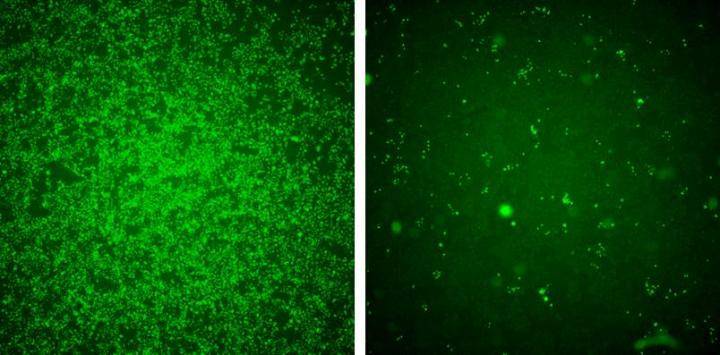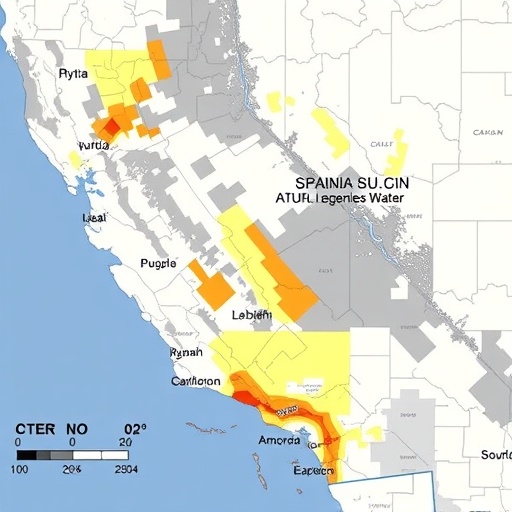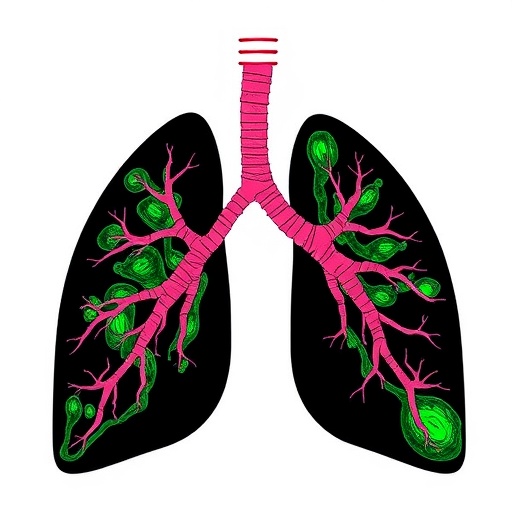
WORCESTER, MA – Eight weeks after receiving their first samples of Zika virus, scientists at the University of Massachusetts Medical School (UMMS) have shown that a very small protein we all have in our bodies, interferon-induced protein 3 (IFITM3), can dramatically reduce the ability of Zika virus to infect human and mouse cells. In some cases, IFITM3 can also prevent Zika virus from killing our cells. The findings, by senior author Abraham Brass, MD, PhD, assistant professor of microbiology & physiological systems, suggest that boosting the actions of IFITM3 may be useful for inhibiting Zika virus and other emerging viral infections. The study appears in the journal Cell Reports.
“This work represents the first look at how our cells defend themselves against Zika virus’ attack,” said Dr. Brass. “Our results show that Zika virus has a weakness that we could potentially exploit to prevent or stop infection.”
Previous studies by Brass and Paul Kellam, PhD, professor from the Wellcome Trust Sanger Institute in the UK, have shown that people who have a genetic variant, or allele, of the IFITM3 gene are more susceptible to the development of severe influenza. While relatively rare in people of European decent, this IFITM3 variant is more common in Asia and Micronesia. The current study suggests that it will be important to test whether this allele might contribute to the risk of more severe Zika virus infections and birth defects, according to Brass.
An expert in flaviviruses, a family of viruses transmitted by mosquitos that includes Zika, yellow fever, dengue and West Nile, Brass has developed a suite of genomic tools to probe how human cells respond to pathogens and how these invaders exploit host cell factors and proteins to replicate.
“Having these tools allowed us to respond quickly when the Zika virus threat emerged,” said Brass. “We simply adapted the technology we’d developed over the last four years working with dengue, influenza and other viruses to begin work on Zika virus.”
The mosquito-transmitted Zika virus typically causes relatively mild symptoms in infected adults. Prior to outbreaks of the virus in Micronesia and Southeast Asia in 2007 relatively few human cases had been reported. An ongoing epidemic of Zika virus began in early 2015 in Brazil and with it new evidence emerged that Zika virus infection of mothers during early pregnancy can result in microcephaly, a severe brain defect in infants.
There is no treatment for Zika virus infection. The best way to prevent the infection is to limit potential exposure to the infected mosquitos that carry the disease. As summer heats up and mosquito season gets under way, the World Health Organization expects the virus to spread throughout much of the Americas including parts of the United States.
From their earlier research on dengue virus and other flaviviruses related to Zika virus, Brass and his group had a hunch that IFITM3 might reduce or block viral infection. Using the IFITM3 tools and assays they’d developed for studying dengue and influenza viruses, the Brass lab was able to rapidly test IFITM3’s effect on Zika virus. “We just plugged Zika virus into our system and immediately began testing it,” said Brass. “What might have taken many months or longer to build, we were able to turn around in just several weeks.”
Found in nearly all human cells, IFITM3 works to alter the cell membrane, making it more difficult for viruses to penetrate this outer defense. The Brass lab found that when IFITM3 levels are low, Zika virus can more readily infiltrate into the cell interior and cause infection. Conversely, they discovered that when IFITM3 is abundant and on guard, it strongly prevents Zika virus from reaching the interior of the cell and so blocks its infection.
“In effect, we see that IFITM3 allows our cells to swallow up and quarantine the virus thereby stopping their own infection, and also the infection of neighboring cells” said George Savidis, a research associate in the Brass lab and the first author of the study. “We think this also reduces the levels of cell death caused by Zika virus.
“This work shows that IFITM3 acts as an early front line defender to prevent Zika virus from getting its hands on all of the resources in our cells that it needs to grow,” said Savidis. “IFITM3 pretty much keeps Zika virus stuck in no man’s land where it can’t do anything to harm us.”
The next step for Brass and his collaborators, including Sharone Green, MD, associate professor of medicine and a flavivirus expert at UMMS, is to test these findings in mice that are IFITM3-deficient to see whether these animals are more susceptible to the effects of Zika virus infection. The Brass lab is also searching for small molecules that can boost the levels, and hopefully the anti-viral actions, of IFITM3. Brass believes that such molecules could be developed into therapies to treat or protect us from Zika virus, as well as a growing list of other dangerous viruses.
“A lot of data by us and others in the field has shown that IFITM3 has a big impact on blocking many emerging viruses such as dengue, Zika, and Ebola” said Brass. “Given our recent results with Zika virus, it’s now even more important that we work to find out how IFITM3 is blocking these viruses, and use that knowledge to prevent and treat infections.”
###
About the University of Massachusetts Medical School
The University of Massachusetts Medical School (UMMS), one of five campuses of the University system, is comprised of the School of Medicine, the Graduate School of Biomedical Sciences, the Graduate School of Nursing, a thriving research enterprise and an innovative public service initiative, Commonwealth Medicine. Its mission is to advance the health of the people of the Commonwealth through pioneering education, research, public service and health care delivery with its clinical partner, UMass Memorial Health Care. In doing so, it has built a reputation as a world-class research institution and as a leader in primary care education. The Medical School attracts more than $266 million annually in research funding, placing it among the top 50 medical schools in the nation. In 2006, UMMS’s Craig C. Mello, PhD, Howard Hughes Medical Institute Investigator and the Blais University Chair in Molecular Medicine, was awarded the Nobel Prize in Physiology or Medicine, along with colleague Andrew Z. Fire, PhD, of Stanford University, for their discoveries related to RNA interference (RNAi). The 2013 opening of the Albert Sherman Center ushered in a new era of biomedical research and education on campus. Designed to maximize collaboration across fields, the Sherman Center is home to scientists pursuing novel research in emerging scientific fields with the goal of translating new discoveries into innovative therapies for human diseases.
Media Contact
Jim Fessenden
[email protected]
508-579-2934
@UMassMedNow
http://www.umassmed.edu
The post UMMS scientists offer first look at how our cells can ‘swallow up and quarantine’ Zika appeared first on Scienmag.





